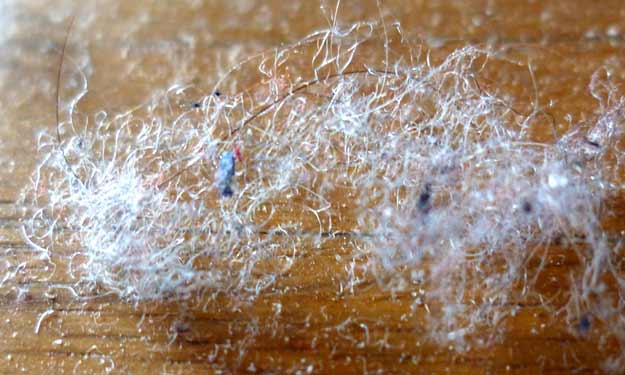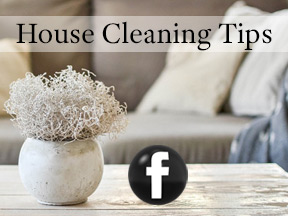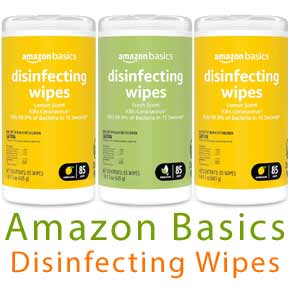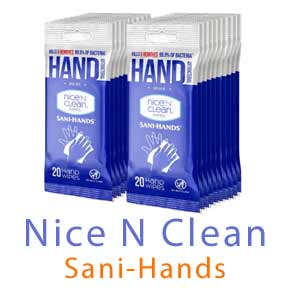Professional Dusting and Cleaning Tips

Dusting Tips from Professional House Cleaners.
Dust Your Home Like a Professional House Cleaner
I might be in the minority, but I enjoy dusting. I crank up the tunes to help me get going and get in my “dusting zone”. Dusting doesn’t take very long and everything feels cleaner after I have removed that hazy film that covers all the flat surfaces.
If dusting is not one of your priorities, then consider this- the dust in your home is mostly dead skin cells (pet and human) which are constantly being sloughed off your skin, dead insects, pollen, lint and other substances can actually increase the chances that you or someone in your family will develop allergies.
Knowing that dust isn’t just “innocent” flying lint, but is actually dead skin gives me a whole opinion on an acceptable level of dust (none!). Just the thought of it makes me feel a little squeamish as I’m writing this…
So think of it this way: if you have an efficient technique, some great tunes and know all the benefits of a dust free home, then dusting doesn’t have to be such a dreaded task.
Dusting Supplies
Keep your dusting supplies organized in a small tote, so everything you need is in one place, making it easy to grab and go.
Tools:
- Dusting or cleaning rags: Terry cloth works great, or you can use microfiber cloths or mitts lightly dampened with water for better dust pickup.
- Duster for high spots: Ostrich feather dusters, lamb’s wool dusters, or microfiber dusters are all good options. Ostrich feathers can trap dust well, but some people prefer microfiber for its superior dust-grabbing ability. Skip synthetic feather dusters, they tend to just scatter dust.
- Vacuum: A good vacuum with a HEPA filter is key for keeping dust inside the machine, not floating back into your home. Without a HEPA filter, you’ll likely have to dust more frequently.
Cleaning Supplies:
- Furniture polish
- Glass or window cleaner
- Disinfectant spray or wipes
You’ll use these to wipe down surfaces and remove dust completely, not just shuffle it around. Prefer natural options? You can always make your own cleaners, see recipes below.
Homemade Furniture Polish
Make your furniture shine and repel dust with this all natural, inexpensive furniture polish recipe. Mix ingredients in a spray bottle and you are ready to go:
- 2 tablespoons lemon oil
- 2 cups mineral oil
Homemade Window Cleaner
A great home made window cleaner that will make your windows shine and will not leave streaks. Mix these ingredients a spray bottle:
- 1 cup distilled white vinegar
- 1/4 cup non-sudsy ammonia
- 1 cup water
This window cleaning recipe is natural but toxic so make sure you label your spray bottle and keep it up and out of reach of children.
Homemade Disinfectant
This recipe is a great disinfectant, deodorizer, bleach-alternative and won’t discolor any surfaces. Borax is also less expensive than commercial disinfectants on the market.
- 1/2 cup borax
- 1 gallon of warm water
Borax is natural but can be toxic. Label your spray bottle and keep out of reach of children.
How to Dust Like a Professional Cleaner
Want to dust like the pros do? It’s all about working efficiently and methodically from top to bottom. Follow these expert steps and you’ll leave your home sparkling, without just moving dust from one place to another.
Start with a Tidy Room
Before you even lift a duster, take a few minutes to tidy up:
- Pick up clutter.
- Shake out small rugs (do this outside to avoid resettling dust inside).
- Fluff throw pillows.
- Make the bed if you’re in a bedroom.
A clean surface means less dust to chase, and a smoother, faster clean.
Work from Top to Bottom
Dust always settles downward, so your cleaning should follow gravity:
- Start at the ceiling.
- Remove cobwebs from corners.
- Dust ceiling fans, light fixtures, and crown molding.
This ensures you won’t have to reclean surfaces below that you’ve already wiped down.
Use the Right Tools in the Right Places
- Feather duster (see note above) or microfiber duster: Great for high or intricate areas like lampshades, carved furniture, drawer fronts, and wall décor. Avoid using feather dusters on flat surfaces, they tend to scatter dust rather than trap it.
- Vacuum attachments: Use the upholstery or brush tool for blinds and drapes. Start at the top and work your way down. Vacuum these areas every few weeks to stay ahead of dust buildup.
Dust Lower Surfaces Thoroughly
Now move to the mid- and low-level areas:
- Spray a lightly dampened microfiber cloth with your favorite dusting spray or homemade cleaner.
- Wipe baseboards, stair rails, picture frames, and furniture surfaces.
- Always pick up and move decorative objects, don’t just dust around them. Dust each item before placing it back.
Clean as You Go
Dusting is a great opportunity to sanitize surfaces you use daily:
- Wipe down light switches, remote controls, phones, and tabletops.
- Always spray your cloth, not the surface – especially with electronics or wood finishes – to avoid damage or oversaturation.
Shine Glass and Mirrors
- Use a streak-free glass cleaner and a clean microfiber or terry cloth (not paper towels, they tend to leave lint behind).
- Polish mirrors, glass tabletops, and windows for a sparkling finish.
Polish Wood Furniture
After removing dust:
- Apply furniture polish to wood surfaces to restore shine and add a layer of protection.
- Use a soft, lint-free cloth and buff in the direction of the wood grain.
Detail the Corners and Edges
Grab your vacuum’s crevice tool and clean along:
- Baseboards
- Floor trim
- Inside corners where pet hair, crumbs, and dust tend to settle
These overlooked spots make a big difference in the overall clean look of the room.
Vacuum Last
With all the dust now on the floor, it’s time to vacuum:
- Start in the farthest corner of the room.
- Vacuum your way toward the door in straight, overlapping passes.
- Be sure to get under furniture and along edges for a complete finish.
Dusting like a pro doesn’t just make your home look clean, it improves your air quality and keeps allergens at bay. By following a system and using the right tools, you’ll make each dusting session more effective and less of a chore.
How to Keep your Home Dust Free
Get Rid of Clutter
The more clutter laying around, the easier it is for dust to build up. Box up all unused items laying around and donate it or have a garage sale.
Replace your Air Filters
Keeping your air filters clean a must. After all, they are meant to trap dust that is circulating from the furnace fan or air conditioning system in your home.
Plugged up air filters do not do a good job at removing dust and make your fan work harder to circulate clean air. Cleaning air filters regularly will limit dust, allergens and irritants.
Change your Vacuum Bags
Change the bags in your vacuum cleaner frequently and keep new bags on hand. The fresh bag will help remove dust particles more efficiently.
Enjoy your Dust Free Home
All of this might seem a bit overwhelming at first, but after a couple of times you will know how to “work a room”. Just follow my tried-and-true dusting tips to get results you can both see and smell.








